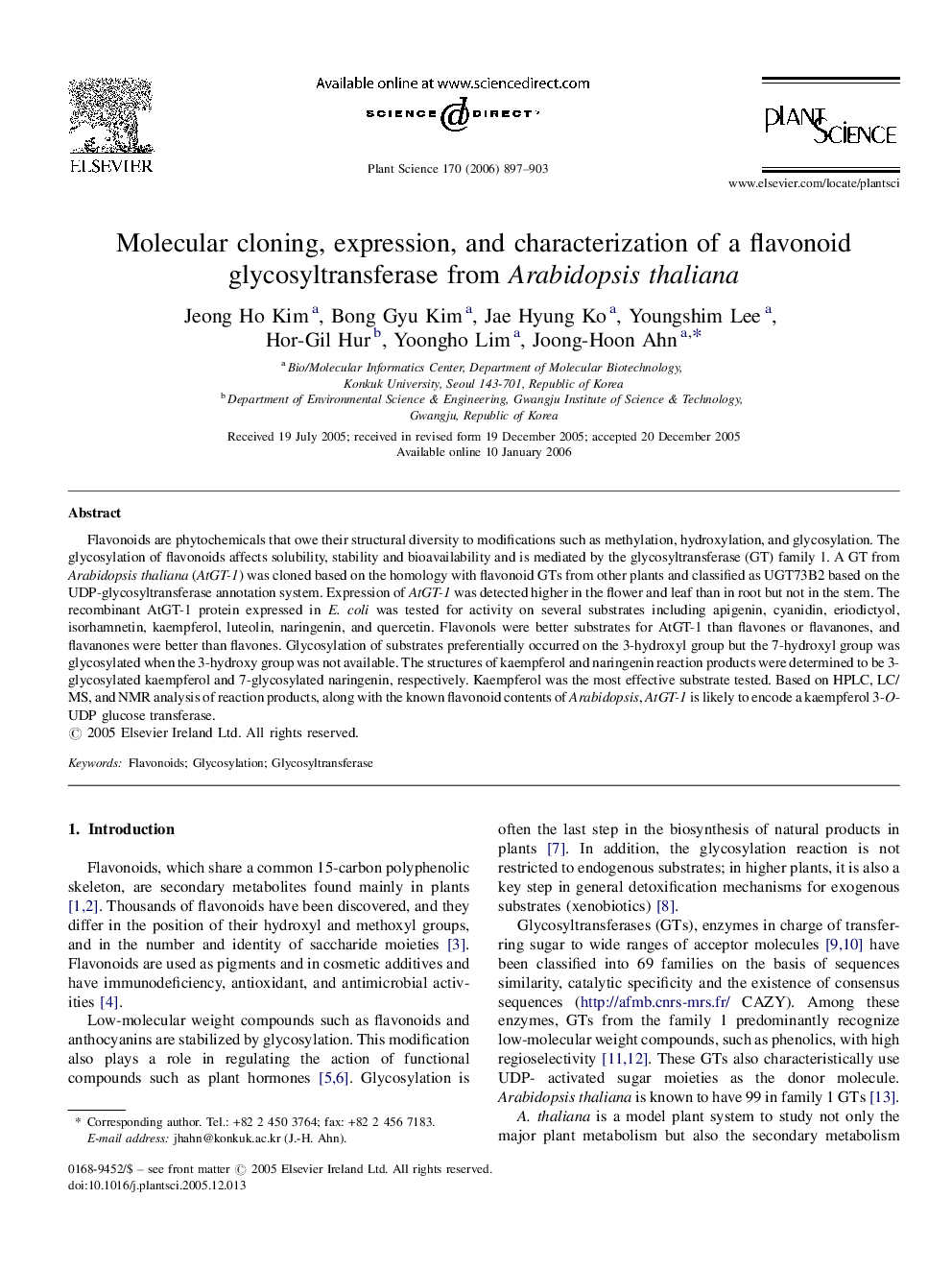| Article ID | Journal | Published Year | Pages | File Type |
|---|---|---|---|---|
| 2018788 | Plant Science | 2006 | 7 Pages |
Flavonoids are phytochemicals that owe their structural diversity to modifications such as methylation, hydroxylation, and glycosylation. The glycosylation of flavonoids affects solubility, stability and bioavailability and is mediated by the glycosyltransferase (GT) family 1. A GT from Arabidopsis thaliana (AtGT-1) was cloned based on the homology with flavonoid GTs from other plants and classified as UGT73B2 based on the UDP-glycosyltransferase annotation system. Expression of AtGT-1 was detected higher in the flower and leaf than in root but not in the stem. The recombinant AtGT-1 protein expressed in E. coli was tested for activity on several substrates including apigenin, cyanidin, eriodictyol, isorhamnetin, kaempferol, luteolin, naringenin, and quercetin. Flavonols were better substrates for AtGT-1 than flavones or flavanones, and flavanones were better than flavones. Glycosylation of substrates preferentially occurred on the 3-hydroxyl group but the 7-hydroxyl group was glycosylated when the 3-hydroxy group was not available. The structures of kaempferol and naringenin reaction products were determined to be 3-glycosylated kaempferol and 7-glycosylated naringenin, respectively. Kaempferol was the most effective substrate tested. Based on HPLC, LC/MS, and NMR analysis of reaction products, along with the known flavonoid contents of Arabidopsis, AtGT-1 is likely to encode a kaempferol 3-O-UDP glucose transferase.
